text: Raphael Oberhuber
translation: Gerrit jackson
fotos: Ladislav Zajac
Joint Ventures: Galerie nächst St. Stephan Rosemarie Schwarzwälder, Wien
Sonia Leimer – Junks of Joy
May 1 – Jun 12, 2021
Sonia Leimer’s exhibition „Junks of Joy“ intertwines several strands in the artist’s output of the past few years. Leimer’s art grapples with forms of globalization, the exploration of new places, and the relevance of these movements, sketching their impact on the world.
Sonia Leimers Ausstellung „Junks of Joy“ verbindet mehrere Stränge im Werk der Künstlerin der letzten Jahre. Leimers Auseinandersetzung gilt Formen von Globalisierung, der Erkundung neuer Orte und der Relevanz dieser Bewegungen, deren Wirkung auf die Welt sie skizzieren.
In the key scene in the classic 1980s movie “Wall Street,” Gordon Gekko, the personification of rampant neoliberalism, tries to explain the world to a delegation of union representatives. Gekko’s credo that “greed captures the essence of the evolutionary spirit” sums up a growth-positive way of thinking that has shaped our lives for generations. At its core, it contains a second important component—hope. The hope of advancement, the hope of setting off for distant shores, but by extension also the expectation that technology will compensate for our destructive way of life: the perennial hope that we will somehow fix the whole mess.
The video “Eden Antarctica” homes in on this observation. We are transported to a research station in the icy wastes of Antarctica, where scientists are investigating novel forms of food production—a tacit admission of defeat: instead of trying to resolve a global challenge, humanity invests its hopes in scientifically and geographically remote panaceas. The need for less exploitative uses of the planet and its resources is obscured by the futuristic belief that a broken planet can be made livable again by an enormous feat of engineering.
The ensemble of “Penny Bank” sculptures consists of a series of ceramics whose amorphous shapes suggest little critters insatiably gobbling up cash through their narrow slots. The surfaces are enhanced by a fat lava glaze that recalls the surface of the moon. It is a style that was popularized by design objects in the 1960s—their futurism emblematized the naïve optimism that fueled the exploration of new worlds. Leimer brands that confidence as wishful thinking with her series of “Space Junks.” They were inspired by debris from old satellites and the space capsules of yesteryear’s expeditions into the great unknown that fell back to Earth as useless lumps of material, relics of our lack of awareness concerning the consequences of our way of life. Hope and willful blindness go hand in hand.
Im Schlüsselmoment des 1980er-Filmklassikers „Wall Street“ findet sich Gordon Gekko, die personifizierte Gestalt des wuchernden Neoliberalismus, vor einer Gruppe von Gewerkschaftern wieder, um ihnen die Welt zu erklären. Gekkos Ausspruch „Greed captures the essence of the evolutionary spirit“ bringt eine wachstumspositive Denkweise auf den Punkt, die unser Leben seit Generationen prägt und im Kern eine zweite wichtige Komponente beinhaltet – Hoffnung. Die Hoffnung, weiter zu kommen, neue Ufer zu erreichen, aber auch in weiterer Folge die Hoffnung, durch Technologie unsere zerstörerische Lebensweise auszugleichen. Die immerwährende Hoffnung, dass wir das schon richten können.
Das Video „Eden Antarctica“ dockt an diese Beobachtung an. Wir finden uns wieder auf einer Forschungsstation in der antarktischen Eiswüste, wo neue Formen von Lebensmittelproduktion erforscht werden – es ähnelt einer Kapitulation. Anstatt sich der Lösung eines globalen Problems anzunehmen, sucht man in wissenschaftlichen und geografischen Nischen nach einem Ausweg. Die Notwendigkeit, den Planeten und seine Ressourcen weniger ausbeuterisch zu nutzen, wird gegen den Zukunftsglauben eingetauscht, eine kaputte Welt mit technologischem Aufwand lebensfähig zu machen.
Der skulpturale Werkkomplex der „Spardosen“ ist eine Serie von Keramiken, die in ihrer amorphen Form an kleine Lebewesen denken lässt, die mit ihren schmalen Schlitzen nach immer mehr verlangen. Die Oberflächen der Skulpturen sind verziert mit einer Fat-Lava-Glasur, die an die Oberfläche des Mondes erinnert. Designobjekte der 60er Jahre machten diesen Stil populär – sie waren futuristisch und emblematisch für den naiven Optimismus, der mit der Erforschung neuer Welten einherging. Diesem Wunschdenken stellt Leimer ihre Serie von „Space“ Junks entgegen. Sie sind inspiriert von Schrottteilen alter Satelliten und von Raumkapseln vergangener Weltraumexpeditionen, die auf die Erde zurückgefallen sind als unbrauchbare Klumpen. Hier werden sie zu Relikten unseres fehlenden Bewusstseins für die Konsequenzen unserer Lebensweise. Hoffnung und Verdrängung gehen Hand in Hand.
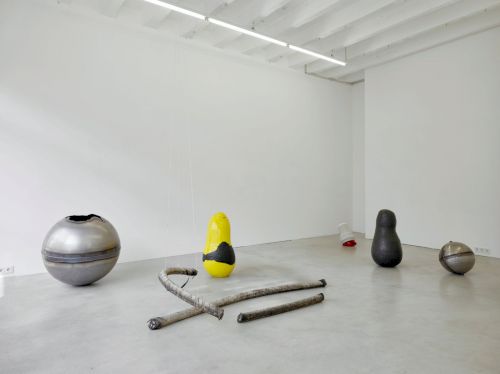
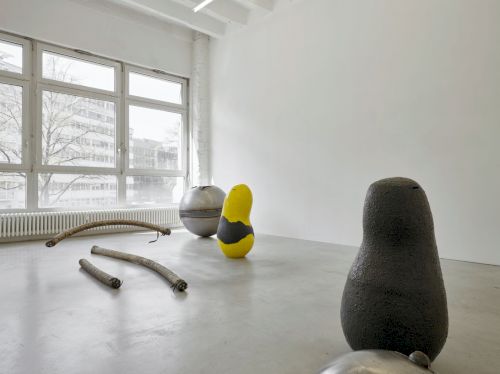
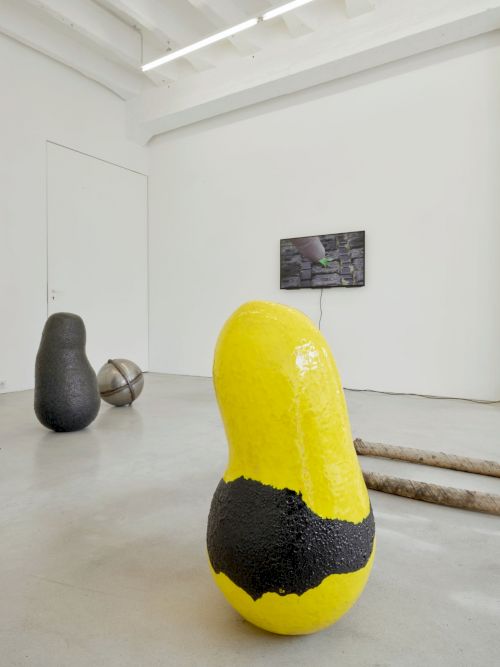
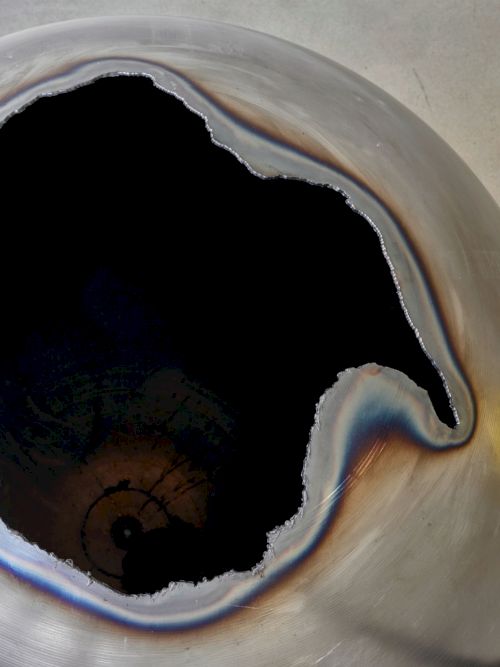


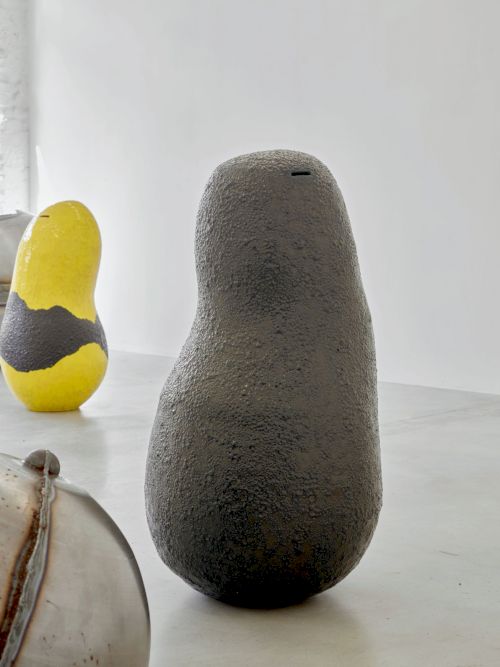

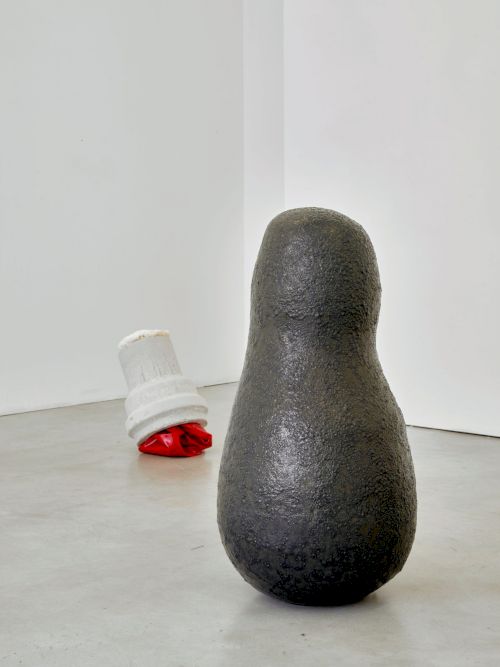


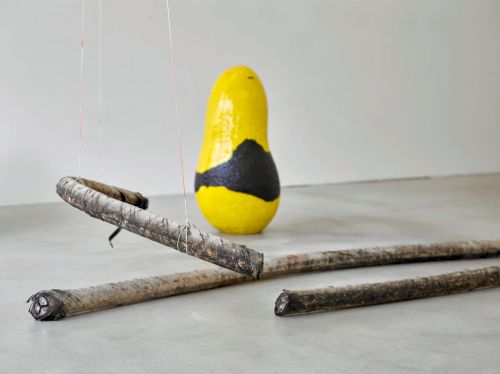


- Current
- Upcoming
- 2025
- 2024
- 2023
- 2022
- 2021
- 2020
- 2019
- 2018
- 2017
- 2016
- 2015
- 2014
- 2013
- 2012
- 2011
- 2010
- 2009